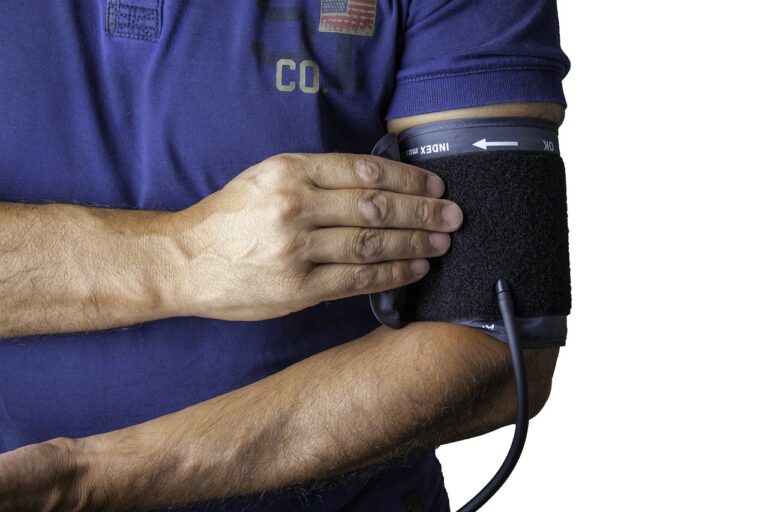Health Benefits of High-Intensity Interval Training: Cardiovascular Conditioning and Fat Burning
High-Intensity Interval Training (HIIT) has gained popularity in recent years due to its efficiency in improving cardiovascular fitness and promoting fat loss. This type of exercise involves alternating between short bursts of intense activity and periods of rest or lower intensity. Research has shown that HIIT can lead to significant improvements in VO2 max, a measure of the body’s ability to utilize oxygen during exercise, which is a key indicator of cardiovascular health.
One of the key mechanisms behind the effectiveness of HIIT is its ability to stimulate the body’s anaerobic energy systems, leading to adaptations that enhance overall performance. By pushing the body to its limits during the high-intensity intervals, HIIT can elicit a wide range of physiological responses, including increased heart rate, elevated levels of stress hormones, and improved oxygen uptake by muscles. These acute responses, when repeated over time, can result in long-term adaptations that improve cardiovascular function and metabolic efficiency.
• HIIT involves alternating between short bursts of intense activity and periods of rest or lower intensity
• Research has shown that HIIT can lead to significant improvements in VO2 max
• HIIT stimulates the body’s anaerobic energy systems, leading to adaptations that enhance overall performance
• HIIT elicits physiological responses such as increased heart rate, elevated levels of stress hormones, and improved oxygen uptake by muscles
Understanding the Impact on Cardiovascular Health
High-intensity interval training (HIIT) has been shown to have a significant impact on cardiovascular health. The alternating periods of intense exercise followed by short recovery periods help to improve cardiovascular endurance and efficiency. This type of training challenges the heart and lungs, leading to increased stroke volume and improved oxygen utilization within the body.
Research indicates that HIIT can also positively affect blood pressure and cholesterol levels, both of which are crucial markers for cardiovascular health. The intensity of HIIT sessions can help lower blood pressure and reduce LDL cholesterol levels while increasing HDL cholesterol levels. These improvements in blood pressure and lipid profiles contribute to a lower risk of developing heart disease and other cardiovascular conditions.
Exploring the Effects on Metabolism and Fat Loss
High-intensity interval training (HIIT) has gained immense popularity in recent years for its ability to enhance metabolism and promote fat loss. This form of exercise involves short bursts of intense activity followed by brief periods of rest, challenging the body to work at its maximum capacity. Research suggests that HIIT can significantly boost metabolism, increasing the number of calories burned both during and after exercise.
In addition to its impact on metabolism, HIIT has been shown to be an effective tool for fat loss. The intense nature of HIIT workouts can help the body burn a greater amount of fat in a shorter period of time compared to steady-state cardio exercises. Furthermore, HIIT has been found to promote the production of human growth hormone, which plays a key role in fat metabolism and the preservation of lean muscle mass.
What is high-intensity interval training (HIIT) and how does it impact metabolism?
HIIT is a form of exercise that involves short bursts of intense activity followed by brief periods of rest or lower intensity. Studies have shown that HIIT can boost metabolism and increase the body’s ability to burn fat, even after the workout is over.
How does HIIT affect fat loss compared to steady-state cardio?
HIIT has been shown to be more effective at burning fat than steady-state cardio. This is because HIIT increases the body’s metabolic rate, which results in more calories being burned both during and after the workout.
Can HIIT improve cardiovascular health?
Yes, HIIT has been found to improve cardiovascular health by increasing aerobic capacity, lowering blood pressure, and improving cholesterol levels. It also helps to strengthen the heart and improve overall cardiovascular function.
How often should I incorporate HIIT into my workout routine to see results?
It is recommended to incorporate HIIT workouts 2-3 times per week to see optimal results. It is important to listen to your body and allow for proper rest and recovery between intense workouts.
Are there any risks associated with HIIT?
While HIIT can be an effective form of exercise, it is important to listen to your body and not overdo it. Overtraining with HIIT can lead to increased risk of injury, muscle fatigue, and burnout. It is important to consult with a fitness professional before starting a HIIT program.







